Andrew Paul Wood – 26 October, 2011
On the rear wall are a number of jewel-like coloured pencil drawings made from blown up photographs of famous diamonds, Eureka, unlucky Hope, Blue Heart, Red Cross and Cullinan II, suggesting their tangled histories of ownership by their magical names as much as their beautiful interactions of light and geometry.
Christchurch
Hannah and Aaron Beehre
Lilith and Cruithne
7 October - 29 October 2011
I am assuming that the title, Lilith and Cruithne, has something to do with the hypothetical “dark moon” Lilith (and disproved) second moon proposed by proposed by astrologer Walter Gornold in 1918, and the popular misconception that asteroid Cruithne is Earth’s second moon (it isn’t because it doesn’t orbit Earth, rather it moves in its own related orbit). The names are pleasantly exotic (the former from Adam’s first wife in Jewish tradition, mother of demons, and the latter the name of an ancient Irish people), and the art is pleasantly Science-Fictiony and ever so slightly Other Worldy.
So, moons of Earth (but not really) other than good old Luna. Perhaps a reference to the heaven of ideal forms Plato imagined to exist somewhere beyond the moon, or just a name check as a placeholder for some fantasy space in which to work the artistic imagination. Certainly such concepts signal a profoundly metaphysical bent to the art. Beyond the fields we know lies… what?
A major underlying theme appears to be the crystalline, which to my mind puts in the camp of the Romantics of a Germanic variety along with Caspar David Friedrich’s The Sea of Ice (The Wreck of Hope) (Kunsthalle Hamburg, 1823-1824) and the fantastical glass pavilions imagined by architect Bruno Taut (1880-1938). Dominating the space is Rumbleparka, (a Christchurch earthquake reference?), an architectonic construction of transparent acrylic shards illuminated by LEDs from the base, slowly changing from a cool glacial sapphire blue, through propane mauve, to intense flamingo magenta, like some kind of novelty lamp a stoner might buy at the local head shop. This is entirely in keeping with the Hanaaron’s games with light in recent years, though perhaps not as adventurous as some of their projected light work. The allusion to the transcendental Sublime of Burke, Kant, Schopenhauer and Hegel is inescapable.
On the rear wall are a number of (if you’ll pardon the pun) jewel-like coloured pencil drawings made from blown up photographs of famous diamonds, Eureka, unlucky Hope, Blue Heart, Red Cross and Cullinan II, suggesting their tangled histories of ownership by their magical names as much as their beautiful interactions of light and geometry. These are really lovely drawings, their static, angular nature yielding to an almost abstract beauty and complexity highlighting the precision and detail of the lapidaries’ art. Artistically they recall for me a gamut of aesthetic associations from André Derain and Cézanne at their most abstract, through to Fernand Léger, Analytical Cubism, Jean Hélion, late Mondrian, the geometric abstraction of Ernesto de Oliveira, Burgoyne Diller, Fritz Glarner, Josef Albers, Ilya Bolotowsky, and even Colin McCahon’s Titirangi paintings.
This crystalline imagery proves merely to be an aspect of a broader geological theme. The third component of the exhibition is a series of decidedly non-crystalline charcoal drawings of submarine volcanic explosions named Letters to Victor Jouet. Jouet was a Roman Catholic priest who in 1894 founded the Museum of Holy Souls in Purgatory in the Chiesa del Sacro Cuore del Suffragio (a beautiful church that looks like a smaller version of the Milan Duomo) on the Tiber in Rome. This peculiar little museum, created with the permission of Pius X (while the Church frowns on communicating with ghosts, it doesn’t mind evidence of them trying to communicate from Purgatory) contains many objects bearing supposed spectral traces from the Other Side. Communications from the underworld? Heaven and Hell?
I struggle with the juxtapositions in this relatively confined space. Perhaps the implication is that the social compression and upheaval in Christchurch will eventually yield spiritual diamonds. Then again, it might just be visually interesting, enjoyable, if not particularly risk-taking, art.
Andrew Paul Wood
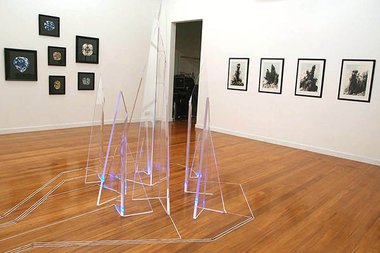

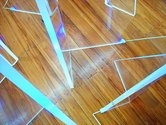


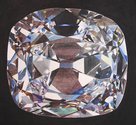
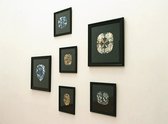
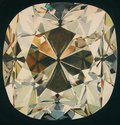

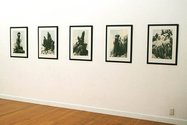

 Advertising in this column
Advertising in this column Two Rooms presents a program of residencies and projects
Two Rooms presents a program of residencies and projects



This Discussion has 0 comments.
Comment
Participate
Register to Participate.
Sign in
Sign in to an existing account.